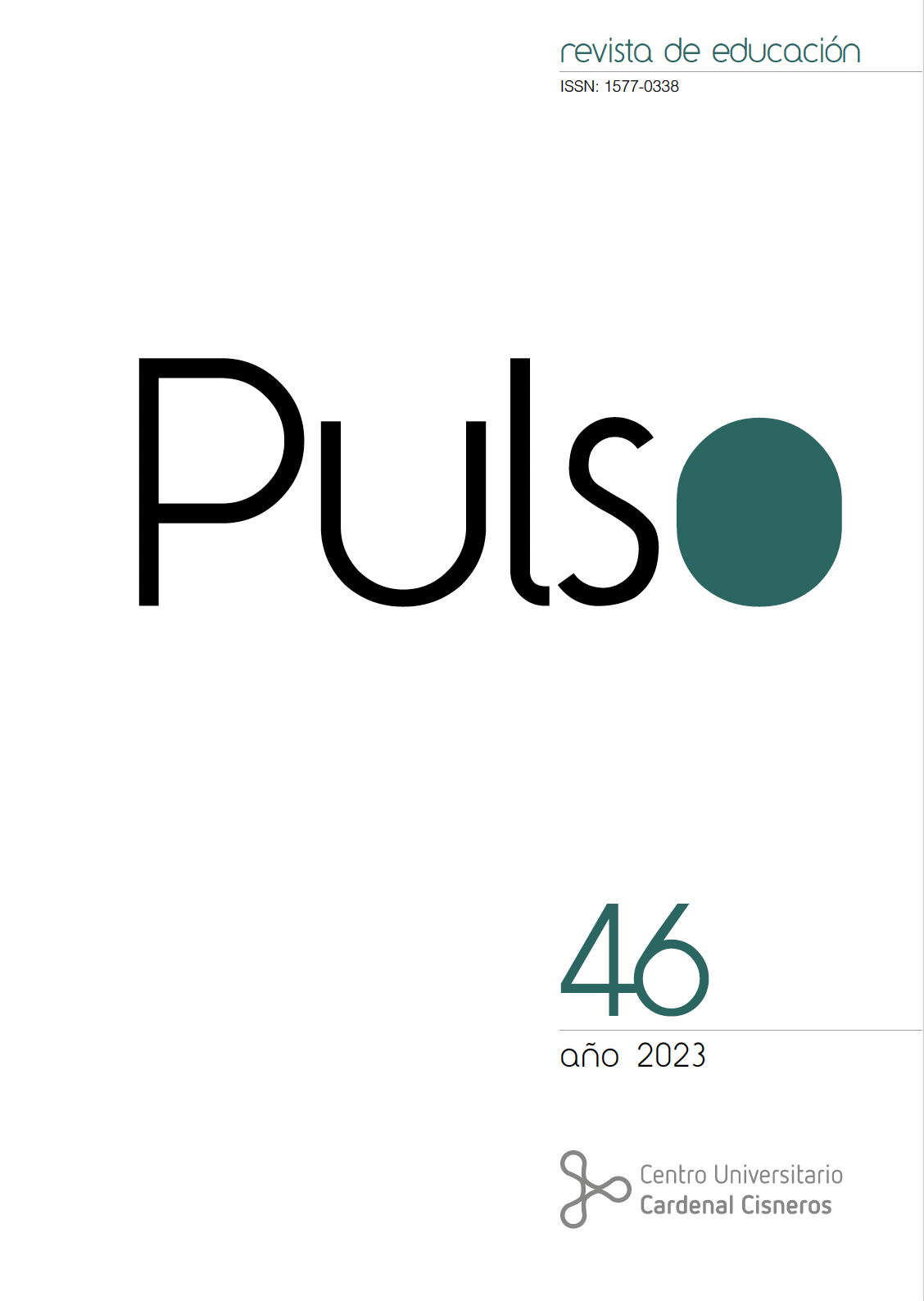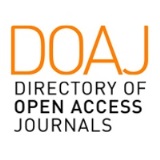La relación entre bullying y ciberbullying en el contexto universitario
DOI:
https://doi.org/10.58265/pulso.5935Palabras clave:
Bullying, Ciberbullying, Educación superior, Agresores, VíctimasResumen
La mayoría de las investigaciones sobre la relación entre acoso y ciberacoso se han centrado en las etapas educativas previas a la universitaria, sobre todo en educación secundaria. Este artículo pretende estudiar la relación entre bullying y ciberbullying en estudiantes de universidad analizando las coincidencias en los roles de implicación en ambos fenómenos. La muestra la forman 776 estudiantes universitarios, los cuales respondieron a la validación española del European Bullying Intervention Project Questionnaire y del European Cyberbullying Intervention Project Questionnaire (Ortega-Ruiz et al., 2016), adaptados a un formato online, que identifican los roles de víctima, agresor, agresor victimizado y no implicado. Se utilizó una metodología cuantitativa. Los resultados muestran que los y las estudiantes clasificados como víctimas o como agresores de bullying tradicional tienden a aparecer clasificados del mismo modo en la escala de ciberbullying. Se concluye que existe relación entre ser víctima de bullying y ciberbullying, por un lado, y ser agresor en bullying y ciberbullying, por otro. Se discute la repercusión de los resultados y cómo utilizarlo para la mejora del contexto universitario.
Descargas
Citas
Álvarez-Quiroz, G.B.., Guerrero, M. F., Algorín, S. P., Zamudio, R. D., y Sánchez, N. I. (2023). Relación entre bullying, ciberbullying y autoestima: prevalencia y factores asociados en adolescentes de Colombia. Zona Próxima, 38, 88-109. https://dx.doi.org/10.14482/zp.38.329.137
Avilés, J.M. (2013). Análisis Psicosocial del Ciberbullying: claves para una educación moral. Papeles del Psicólogo, 43(1), 65-73.http://www.papelesdelpsicologo.es/pdf/2172.pdf
Baldry, AC., Farrigton, DV. Y Sorrentino, A. (2017). School Bullying and Cyberbullying Among Boys and girls: Roles and Overlap. Journal of Agression, Maltreatment & trauma, 26, 937-951.https://doi.org/10.1080/10926771.2017.1330793
Beltrán-Catalán, M., Zych, I., Ortega-Ruiz, R., y Llorent, V. (2018). Victimisation through bullying and cyberbullying: Emotional intelligence, severity of victimisation and technology use in different types of victims. Psicothema, 30(2), 183-188. https://doi.org/10.7334/psicothema2017.181
Bernardo, A. B., Tuero, E., Cervero, A., Dobarro, A., y Galve-González, C. (2020). Acoso y ciberacoso: variables de influencia en el abandono universitario. Comunicar, 28(64), 63-72. https://www.revistacomunicar.com/html/64/es/64-2020-06.html
Cassidy, W., Faucher, C., y Jackson, M. (2017). Adversity in University: Cyberbullying and its impacts on students, faculty and administrators. International Journal of Environmental Research and Public Health, 14 (8), 888. https://doi.org/10.3390/ijerph14080888
Caurcel Cara, M.J. y Crisol Moya, E. (2022). Ciberacoso en estudiantes universitarios antes y durante el confinamiento por la COVID-19. Educación XX1, 25(1), 67-91. https://doi.org/10.5944/educXX1.30525
Cebollero-Salinas, A., Orejudo, S., Cano-Escoriaza, J.e Íñiguez-Berrozpe, T. (2022). Cybergossip and Problematic Internet Use in cyberaggression and cybervictimisation among adolescents. Computers in Human Behavior, 131, 1-11. https://doi.org/10.1016/j.chb.2022.107230
Clemans, K.H., Graber, J.A., Lyndon, S.T., y Sontag, L.M. (2011). Traditional and cyber aggressors and victims: A comparison of psychosocial characteristics. Journal of Youth and Adolescence, 40(4), 392-404. https://read.qxmd.com/read/20680425/traditional-and-cyber-aggressors-and-victims-a-comparison-of-psychosocial-characteristics
Cosma, A., Walsh, S. D., Chester, K. L., Callaghan, M., Molcho, M., Craig, W., & Pickett, W. (2020). Bullying victimization: Time trends and the overlap between traditional and cyberbullying across countries in Europe and North America. International journal of public health, 65, 75-85. https://doi.org/10.1007/s00038-019-01320-2
Cowie, H.A. (2013). Cyberbullying and its impact on young people’s emotional health and well-being. The Psychiatrist, 37, 167-170. https://www.cambridge.org/core/journals/the-psychiatrist/article/cyberbullying-and-its-impact-on-young-peoples-emotional-health-and-wellbeing/B7DB89A2035CF347E73D21EAF8D91214
Cowie, H., y Myers, C.A. (2014). Bullying amongst University Students in the UK. International Journal of Emotional Education, 6(1), 66-75. https://www.researchgate.net/publication/282005181_Bullying_Among_University_Students_Cross-National_Perspectives
Cuadrado, I., Frenández Antelo, I., y Martín-Mora, G. (2019). ¿Pueden las víctimas de bullying convertirse en agresores del ciberespacio?: estudio en población adolescente. EJIHPE: European Journal of Investigation in Health, Psychology and Education, 9(2), 71-81. https://doi.org/10.30552/ejihpe.v9i2.321
Del Rey, R., Elipe, P., y Ortega, R. (2012). Bullying and cyberbullying: overlapping and predictive value of the co-occurrence. Psicothema, 24(4), 608-613. https://www.psicothema.com/psicothema.asp?id=4061
Domínguez-Vergara, J., Santa-Cruz-Espinoza, H., Chávez-Ventura, G. e Ybañez-Carranza,J. (2023). The moral disconnection as a mediator between aggressiveness and cyberbullying in schoolchildren. International Journal of Sociology of Education, 12(1), 1-24. http://dx.doi.org/10.17583/rise.10786
Dong, Y. (2020). The effect of traditional bullying-victimization on behaviour cyberbullying among college students. Based on the structural equation model. International Journal of Social Psychology, 35 (1), 175-199. https://www.tandfonline.com/doi/abs/10.1080/02134748.2019.1687969
Eriksen, I. M. (2018). The power of the word: students’ and school staff’s use of the established bullying definition. Educational Research, 60, 157-170. https://doi.org/10.1080/00131881.2018.1454263
Estévez, E., Cañas, E., Estévez, JF y Povedano, A. (2020). Continuity and Overlap of Roles in Victims and Aggressors of Bullying and Cyberbullying in Adolescence: A Systematic Review. International Journal of Environmental Research and Public Health, 17(20), 7452 https://doi.org/10.3390/ijerph17207452
Gadelha, M.S.V.; Santos, R.L.M.; Ferreira, M.E.; Costa, D.O.; Araújo, M.L.; Brito, J.I. (2019). Bullying in Higer Education Institutions: Systematic Review. Revista Multidisciplinar e Psicología, 13(44), 357-373. https://doi.org/10.14295/indoline.v.13i44.1601
Garaigordobil, M. (2011). Prevalencia y consecuencias del cyberbullying: una revisión. International Journal of Psychology and Psychological Therapy, 11,233-254. https://www.redalyc.org/articulo.oa?id=560/56019292003
García-Fernández, C.M., Romera-Félix, E.M., y Ortega-Ruiz, R. (2016) Relaciones entre el bullying y el cyberbullying: prevalencia y concurrencia. Pensamiento Psicológico, 14(1), 49-61. https://doi.org/10.11144/Javerianacali.PPSI14-1.rbcp
García Peña, J.J., Moncada Ortíz, R.M., y Quintero Gil, J. (2013). El bullying y el suicidio en el escenario universitario. Revista Colombiana de Ciencias Sociales, 4(2), 298-310. https://dialnet.unirioja.es/servlet/articulo?codigo=5123784
Giumetti, G. W., Kowalski, R. M., & Feinn, R. S. (2022). Predictors and outcomes of cyberbullying among college students: A two wave study. Aggressive behavior, 48(1), 40-54. https://doi.org/10.1002/ab.21992
Gómez Tabares, A. S., y Correa Duque, M. C. (2022). La asociación entre acoso y ciberacoso escolar y el efecto predictor de la desconexión moral: una revisión bibliométrica basada en la teoría de grafos. Educación XX1: revista de la Facultad de Educación, 25(1), 273-308. https://doi.org/10.5944/educxx1.29995
Hoyos, O. L. R., Llanos M. M., y Valega, S. J. (2012). El maltrato entre iguales por abuso de poder en el contexto universitario: incidencia, manifestaciones y estrategias de solución. Universitas Psychologica, 11(3), 793-802. https://www.redalyc.org/pdf/647/64724634009.pdf
Kowalski, R. M., Giumetti, G. W., & Feinn, R. S. (2022). Is Cyberbullying An Extension of Traditional Bullying or a Unique Phenomenon? A Longitudinal Investigation Among College Students. International Journal of Bullying Prevention, 1-18. https://doi.org/10.1007/s42380-022-00154-6
Kowalski, R. M., y Limber, S. P. (2013). Psychological, physical, and academic correlates of cyberbullying and traditional bullying. Journal of Adolescent Health, 53(1), S13–S20. https://doi.org/10.1016/j.jadohealth.2012.09.018
Livingstone, S., Haddon, L., Gorzog, A., y Olafsson, K. (2011). EU kids online final report. EU kidsonline. https://eucpn.org/document/eu-kids-online-final-report
López, M. (2017). Acoso escolar y cibernético en estudiantes universitarios. Revista de Investigación en Educación, 15(1), 11-26. https://dialnet.unirioja.es/servlet/articulo?codigo=5966880
Lund, E. M., y Ross, S. W. (2017). Bullying perpetration, victimization, and demographic differences in college students: A review of the literature. Trauma, Violence, & Abuse, 18(3), 348-360. https://doi.org/10.1177/1524838015620818
Meriläinen, M., Puhakka, H., y Sinkkonen, H.M. (2015). Students suggestions for eliminating bullying at a university. British Journal of Guidance &Counselling, 43(2), 202-215. https://doi.org/10.1080/03069885.2014.950943
Minor, M.A., Smith, G.S., y Brashen, H. (2013). Cyberbullying in Higher Education. Journal of Educational Research and Practice, 3(1), 15-29. https://doi.org/10.5590/JERAP.2013.03.1.02
Myers, C-A., y Cowie, H. (2017). Bullying at University: The Social and Legal Contexts of Cyberbullying Among University Students. Journal of Cross-Cultural Psychology, 48(8), 1172-1182. https://doi.org/10.1177/0022022116684208
Olweus, D. (1998). Conductas de acoso y amenazas entre escolares. Morata.
Olweus, D. (2016). What is ciberbullying? http://www.violencepreventionworks.org/public/cyber_bullying.page
Olweus, D. y Limber, S.P. (2018). Some problems with cyberbullying research. Current Opinionin Psychology, 19, 139-143. https://doi.org/10.1016/j.copsyc.2017.04.012
Ortega-Ruiz, R., Del Rey, R., y Casas, J.A. (2013). La convivencia escolar: clave en la predicción del Bullying. Revista Iberoamericana de Evaluación Educativa, 6(2), 91-102. https://doi.org/10.15366/riee
Ortega-Ruiz, R., Del Rey, R., y Casas, J.A. (2016). Evaluar el bullying y el cyberbullying: validación española del EBIP-Q y del ECIP-Q. Psicología Educativa, 22(1), 71-79. https://doi.org/10.1016/j.pse.2016.01.004
Pichel, R., Foody, M., O’Higgins, J., Feijóo, S., Varela, J., y Rial, A. (2021). Bullying, cyberbullying and the overlap: What does age have to do with it?. Sustainability, 13(15), 8527. https://doi.org/10.3390/su13158527
Pörhörlä, M., Cvancara, K., Kaal, E., Tampere, K., y Torres, B. (2016). Cross-cultural comparisons of bullying among university students: perspectives from Argentina, Estonia, Finland and the United States. En H. Cowie y C.-A. Myers (Eds.), Bullying among university students: cross-national perspectives (pp. 127-142). Routledge.
Prieto, M. T., Carrillo, J. C., y Lucio, L.A. (2015). Violencia virtual y acoso escolar entre estudiantes universitarios: el lado oscuro de las redes sociales. Innovación Educativa, 15 (68), 33-47. http://www.scielo.org.mx/scielo.php?script=sci_arttext&pid=S1665-26732015000200004
Raskauskas, J., & Stoltz, A. D. (2007). Involvement in traditional and electronic bullying among adolescents. Developmental Psychology, 43(3), 564–575. https://doi.org/10.1037/0012-1649.43.3.564
Redondo, J., Luzardo-Briceño, M., García-Lizarazo, K. L., e Inglés, C. J. (2017). Impacto psicológico del ciberbullying en estudiantes universitarios: un estudio exploratorio. Revista Colombiana de Ciencias Sociales, 8(2), 458-478. https://doi.org/10.21501/22161201.2061
R Core Team (2018). R: A language and environment for statistical computing. R Foundation for Statistical Computing, Vienna, Austria. https://www.R-project.org/.
Riebel, J., Jäger, R., y Fischer, U.C. (2009). Cyberbullying in Germany – an exploration of prevalence, overlapping with real life bullying and coping strategies. Psychology Science Quarterly, 51(3), 298-314. https://www.psychologie-aktuell.com/fileadmin/download/Pschology-Science/3-2009/05_riebel.pdf
Rodríguez-Álvarez, J.M, Yubero, S., Navarro, R. y Larrañaga, E. (2021). Relationship between Socio-Emotional Competencies and the Overlap of Bullying and Cyberbullying Behaviors in Primary School Students. European Journal of Investigation in Health, Psychology and Education,11(3), 686-696. https://doi.org/10.3390/ejihpe11030049
Romera, E. M., Camacho, A., Ortega-Ruiz, R., & Falla, D. (2021). Cybergossip, cyberaggression, problematic Internet use and family communication. Comunicar, 67, 61–71. https://doi.org/10.3916/C67-2021-05
Royo-García, P., Laorden Gutiérrez, C., Giménez-Hernández, M., y Serrano-García, C. (2020). ¿Existe el Bullying en la universidad?Aproximación a esta realidad con una muestra española de estudiantes de grado. Edetania. Estudios y Propuestas Socioeducativas, 57, 85-109. https://doi.org/10.46583/edetania_2020.57.510
Sansone, R.A., Leung, J.S., y Wiederman, M.W. (2012). Five forms of childhood trauma: Relationships with employment in adulthood. Child and Neglect, 36, 676-679. https://doi.org/10.1016/j.chiabu.2012.07.007
Sarasola, M., y Cruz, J. (2019) Una revisión de la eficacia de los programas anti-bullying en España. Pulso Revista de Educación, 42, 51-72. https://revistas.cardenalcisneros.es/index.php/PULSO/article/view/344
Siegal, J., Dubrovsky, V., Kiesler, S., y McGuire, T. (1986). Group processes in computer-mediatedcommunication. Organizational Behaviour and Human Decision Processes, 37, 157-187. https://doi.org/10.1016/0749-5978(86)90050-6
Slonje, R., y Smith, P. K. (2007). Cyberbullying: Another main type of bullying? Scandinavian Journal of Psychology, 49, 147–154. https://doi.org/10.1111/j.1467-9450.2007.00611.x
Smith, P.K, Mahdavi, J., Carvalho, C., Fisher, S., Russell, S., y Tippett, N. (2008). Cyberbullying: Its nature and impact in secondary school pupils. Journal of Child Psychology and Psychiatry, 49, 376-385.https://doi.org/10.1111/j.1469-7610.2007.01846.x
Smith, J.A.,y Yoon, J. (2012). Cyberbullying Presence, Extent and forms in a Midwestern Post-secondary institution. Proceedings of the Information Systems Educator Conference. http://citeseerx.ist.psu.edu/viewdoc/download?doi=10.1.1.296.8466&rep=rep1&type=pdf
Tokunaga, R.S. (2010). Following you home from school: a critical review and synthesis of research on cyberbullying victimization. Computers in Human Behavior, 26, 277-287. https://doi.org/10.1016/j.chb.2009.11.014
Trujillo, J.J., y Romero-Acosta, K. (2016). Variables que evidencian el bullying en un contexto universitario. Revista Encuentros, Universidad Autónoma del Caribe, 14(01), 41- 54. https://doi.org/10.15665/re.v14i1.668
Twyman, K., Saylor, C., Taylor, L. A., y Comeaux, C. (2010). Comparing children and adolescents engaged in cyberbullying to matched peers. Cyberpsychology, Behavior and Social Networking,13(2), 195–199. https://doi.org/10.1089/cyber.2009.0137
Vergel, M., Martínez, J., y Zafra, S. (2016). Factores asociados al bullying en instituciones de educación superior. Revista Criminalidad, 58 (2), 197-208. https://dialnet.unirioja.es/servlet/articulo?codigo=5737189
Ybarra, M. L., y Mitchell, K. J. (2004). Youth engaging in online harassment: Associations with caregiver-child relationships, Internet use, and personal characteristics. Journal of Adolescence, 27, 319 –336. https://doi.org/10.1016/j.adolescence.2004.03.007
Yubero, S., Navarro, R., Elche, M., Larrañaga, E., y Ovejero, A. (2017). Cyberbullying victimization in higher education: An exploratory analysis of its association with social and emotional factors among Spanish students. Computers in Human Behavior, 75, 439-449. https://doi.org/10.1016/j.chb.2017.05.037
Zsila, Á., Orosz, G., Király, O., Urbán, R., Ujhelyi, A., Jármi, É., Griffiths, M.D., Elekes, Z., y Demetrovics, Z. (2018). Psychoactive Substance Use and Problematic Internet Use as Predictors of Bullying and Cyberbullying Victimization. International Journal of Mental Health and Addiction, 16(2), 466-479. https://doi.org/10.1007/s11469-017-9809-0
Descargas
Publicado
Cómo citar
Número
Sección
Licencia
Derechos de autor 2023 Pulso. Revista de educación

Esta obra está bajo una licencia internacional Creative Commons Atribución-NoComercial-SinDerivadas 4.0.
Esta revista proporciona un acceso abierto inmediato a su contenido, basado en el principio de que ofrecer al público un acceso libre a las investigaciones ayuda a un mayor intercambio global de conocimiento.
Las obras se publican en la edición electrónica de la revista bajo una licencia Creative Commons Reconocimiento-NoComercial-SinObraDerivada 4.0
Se permite y se anima a los autores a difundir electrónicamente la versión post-print (versión evaluada y aceptada para su publicación) de sus obras antes de su publicación, ya que favorece su circulación y difusión más temprana y con ello un posible aumento en su citación y alcance entre la comunidad académica.














